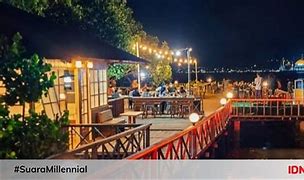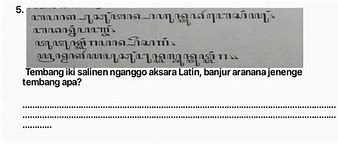
Mosque and former church in Istanbul, Turkey
Hagia Sophia,[a] officially the Hagia Sophia Grand Mosque,[b] is a mosque and former church serving as a major cultural and historical site in Istanbul, Turkey. The last of three church buildings to be successively erected on the site by the Eastern Roman Empire, it was completed in AD 537. The site was an Eastern rite church from AD 360 to 1453, except for a brief time as a Latin Catholic church between the Fourth Crusade and 1261.[4] After the fall of Constantinople in 1453, it served as a mosque until 1935, when it became a museum. In 2020, the site once again became a mosque.
The current structure was built by the Byzantine emperor Justinian I as the Christian cathedral of Constantinople for the Byzantine Empire between 532 and 537, and was designed by the Greek geometers Isidore of Miletus and Anthemius of Tralles.[5] It was formally called the Church of God's Holy Wisdom (Greek: Ναὸς τῆς Ἁγίας τοῦ Θεοῦ Σοφίας, romanized: Naòs tês Hagías toû Theoû Sophías)[6][7] and upon completion became the world's largest interior space and among the first to employ a fully pendentive dome. It is considered the epitome of Byzantine architecture[8] and is said to have "changed the history of architecture".[9] The present Justinianic building was the third church of the same name to occupy the site, as the prior one had been destroyed in the Nika riots. As the episcopal see of the ecumenical patriarch of Constantinople, it remained the world's largest cathedral for nearly a thousand years, until the Seville Cathedral was completed in 1520. Beginning with subsequent Byzantine architecture, Hagia Sophia became the paradigmatic Orthodox church form, and its architectural style was emulated by Ottoman mosques a thousand years later.[10] It has been described as "holding a unique position in the Christian world"[10] and as an architectural and cultural icon of Byzantine and Eastern Orthodox civilization.[10][11][12]
The religious and spiritual centre of the Eastern Orthodox Church for nearly one thousand years, the church was dedicated to the Holy Wisdom.[13][14][15] It was where the excommunication of Patriarch Michael I Cerularius was officially delivered by Humbert of Silva Candida, the envoy of Pope Leo IX in 1054, an act considered the start of the East–West Schism. In 1204, it was converted during the Fourth Crusade into a Catholic cathedral under the Latin Empire, before being returned to the Eastern Orthodox Church upon the restoration of the Byzantine Empire in 1261. Enrico Dandolo, the doge of Venice who led the Fourth Crusade and the 1204 Sack of Constantinople, was buried in the church.
After the fall of Constantinople to the Ottoman Empire in 1453,[16] it was converted to a mosque by Mehmed the Conqueror and became the principal mosque of Istanbul until the 1616 construction of the Sultan Ahmed Mosque.[17][18] Upon its conversion, the bells, altar, iconostasis, ambo, and baptistery were removed, while iconography, such as the mosaic depictions of Jesus, Mary, Christian saints and angels were removed or plastered over.[19] Islamic architectural additions included four minarets, a minbar and a mihrab. The Byzantine architecture of the Hagia Sophia served as inspiration for many other religious buildings including the Hagia Sophia in Thessaloniki, Panagia Ekatontapiliani, the Şehzade Mosque, the Süleymaniye Mosque, the Rüstem Pasha Mosque and the Kılıç Ali Pasha Complex. The patriarchate moved to the Church of the Holy Apostles, which became the city's cathedral.
The complex remained a mosque until 1931, when it was closed to the public for four years. It was re-opened in 1935 as a museum under the secular Republic of Turkey, and the building was Turkey's most visited tourist attraction as of 2019[update].[20]
In July 2020, the Council of State annulled the 1934 decision to establish the museum, and the Hagia Sophia was reclassified as a mosque. The 1934 decree was ruled to be unlawful under both Ottoman and Turkish law as Hagia Sophia's waqf, endowed by Sultan Mehmed, had designated the site a mosque; proponents of the decision argued the Hagia Sophia was the personal property of the sultan. The decision to designate Hagia Sophia as a mosque was highly controversial. It resulted in divided opinions and drew condemnation from the Turkish opposition, UNESCO, the World Council of Churches and the International Association of Byzantine Studies, as well as numerous international leaders, while several Muslim leaders in Turkey and other countries welcomed its conversion into a mosque.
Which album is the song Hagia from?
Hagia is a indonesian song from the album Taifun.
Hagia is a indonesian song from the album Taifun.
Loggia of the Empress
The loggia of the empress is located in the centre of the gallery of the Hagia Sophia, above the Imperial Gate and directly opposite the apse. From this matroneum (women's gallery), the empress and the court-ladies would watch the proceedings down below. A green stone disc of verd antique marks the spot where the throne of the empress stood.[241][242]
Two huge marble lustration (ritual purification) urns were brought from Pergamon during the reign of Sultan Murad III. They are from the Hellenistic period and carved from single blocks of marble.[19]
The Marble Door inside the Hagia Sophia is located in the southern upper enclosure or gallery. It was used by the participants in synods, who entered and left the meeting chamber through this door. It is said[by whom?] that each side is symbolic and that one side represents heaven while the other represents hell. Its panels are covered in fruits and fish motifs. The door opens into a space that was used as a venue for solemn meetings and important resolutions of patriarchate officials.[243]
The Nice Door is the oldest architectural element found in the Hagia Sophia dating back to the 2nd century BC. The decorations are of reliefs of geometric shapes as well as plants that are believed to have come from a pagan temple in Tarsus in Cilicia, part of the Cibyrrhaeot Theme in modern-day Mersin Province in south-eastern Turkey. It was incorporated into the building by Emperor Theophilos in 838 where it is placed in the south exit in the inner narthex.[244]
The Imperial Gate is the door that was used solely by the Emperor and his personal bodyguard and retinue.[227] It is the largest door in the Hagia Sophia and has been dated to the 6th century. It is about 7 meters long and Byzantine sources say it was made with wood from Noah's Ark.[245]
In April 2022, the door was vandalised by unknown assailant(s). The incident became known after the Association of Art Historians published a photo with the destruction. The Greek Foreign Ministry condemned the incident, while Turkish officials claimed that "a citizen has taken a piece of the door" and started an investigation.[246]
At the northwest of the building, there is a column with a hole in the middle covered by bronze plates. This column goes by different names; the "perspiring" or "sweating column", the "crying column", or the "wishing column". Legend states that it has been moist since the appearance of Gregory Thaumaturgus near the column in 1200. It is believed that touching the moisture cures many illnesses.[247][248]
Church of Theodosius II
A second church on the site was ordered by Theodosius II (r. 402–450), who inaugurated it on 10 October 415.[36] The Notitia Urbis Constantinopolitanae, a fifth-century list of monuments, names Hagia Sophia as Magna Ecclesia, 'Great Church', while the former cathedral Hagia Irene is referred to as Ecclesia Antiqua, 'Old Church'. At the time of Socrates of Constantinople around 440, "both churches [were] enclosed by a single wall and served by the same clergy".[25] Thus, the complex would have encompassed a large area including the future site of the Hospital of Samson.[35] If the fire of 404 destroyed only the 4th-century main basilica church, then the 5th century Theodosian basilica could have been built surrounded by a complex constructed primarily during the fourth century.[35]
During the reign of Theodosius II, the emperor's elder sister, the Augusta Pulcheria (r. 414–453) was challenged by the patriarch Nestorius (r. 10 April 428 – 22 June 431).[37][38] The patriarch denied the Augusta access to the sanctuary of the "Great Church", likely on 15 April 428.[38] According to the anonymous Letter to Cosmas, the virgin empress, a promoter of the cult of the Virgin Mary who habitually partook in the Eucharist at the sanctuary of Nestorius's predecessors, claimed right of entry because of her equivalent position to the Theotokos – the Virgin Mary – "having given birth to God".[39][38] Their theological differences were part of the controversy over the title theotokos that resulted in the Council of Ephesus and the stimulation of Monophysitism and Nestorianism, a doctrine, which like Nestorius, rejects the use of the title.[37] Pulcheria along with Pope Celestine I and Patriarch Cyril of Alexandria had Nestorius overthrown, condemned at the ecumenical council, and exiled.[39][37]
The area of the western entrance to the Justinianic Hagia Sophia revealed the western remains of its Theodosian predecessor, as well as some fragments of the Constantinian church.[35] German archaeologist Alfons Maria Schneider began conducting archaeological excavations during the mid-1930s, publishing his final report in 1941.[35] Excavations in the area that had once been the 6th-century atrium of the Justinianic church revealed the monumental western entrance and atrium, along with columns and sculptural fragments from both 4th- and 5th-century churches.[35] Further digging was abandoned for fear of harming the structural integrity of the Justinianic building, but parts of the excavation trenches remain uncovered, laying bare the foundations of the Theodosian building.
The basilica was built by architect Rufinus.[40][41] The church's main entrance, which may have had gilded doors, faced west, and there was an additional entrance to the east.[42] There was a central pulpit and likely an upper gallery, possibly employed as a matroneum (women's section).[42] The exterior was decorated with elaborate carvings of rich Theodosian-era designs, fragments of which have survived, while the floor just inside the portico was embellished with polychrome mosaics.[35] The surviving carved gable end from the centre of the western façade is decorated with a cross-roundel.[35] Fragments of a frieze of reliefs with 12 lambs representing the 12 apostles also remain; unlike Justinian's 6th-century church, the Theodosian Hagia Sophia had both colourful floor mosaics and external decorative sculpture.[35]
At the western end, surviving stone fragments of the structure show there was vaulting, at least at the western end.[35] The Theodosian building had a monumental propylaeum hall with a portico that may account for this vaulting, which was thought by the original excavators in the 1930s to be part of the western entrance of the church itself.[35] The propylaeum opened onto an atrium which lay in front of the basilica church itself. Preceding the propylaeum was a steep monumental staircase following the contours of the ground as it sloped away westwards in the direction of the Strategion, the Basilica, and the harbours of the Golden Horn.[35] This arrangement would have resembled the steps outside the atrium of the Constantinian Old St Peter's Basilica in Rome.[35] Near the staircase, there was a cistern, perhaps to supply a fountain in the atrium or for worshippers to wash with before entering.[35]
The 4th-century skeuophylakion was replaced in the 5th century by the present-day structure, a rotunda constructed of banded masonry in the lower two levels and of plain brick masonry in the third.[35] Originally this rotunda, probably employed as a treasury for liturgical objects, had a second-floor internal gallery accessed by an external spiral staircase and two levels of niches for storage.[35] A further row of windows with marble window frames on the third level remain bricked up.[35] The gallery was supported on monumental consoles with carved acanthus designs, similar to those used on the late 5th-century Column of Leo.[35] A large lintel of the skeuophylakion's western entrance – bricked up during the Ottoman era – was discovered inside the rotunda when it was archaeologically cleared to its foundations in 1979, during which time the brickwork was also repointed.[35] The skeuophylakion was again restored in 2014 by the Vakıflar.[35]
A fire started during the tumult of the Nika Revolt, which had begun nearby in the Hippodrome of Constantinople, and the second Hagia Sophia was burnt to the ground on 13–14 January 532. The court historian Procopius wrote:[43]
And by way of shewing that it was not against the Emperor alone that they [the rioters] had taken up arms, but no less against God himself, unholy wretches that they were, they had the hardihood to fire the Church of the Christians, which the people of Byzantium call "Sophia", an epithet which they have most appropriately invented for God, by which they call His temple; and God permitted them to accomplish this impiety, foreseeing into what an object of beauty this shrine was destined to be transformed. So the whole church at that time lay a charred mass of ruins.
— Procopius, De aedificiis, I.1.21–22
When was Hagia released?
Hagia is a indonesian song released in 2020.
Hagia is a indonesian song released in 2020.
Notable elements and decorations
Originally, under Justinian's reign, the interior decorations consisted of abstract designs on marble slabs on the walls and floors as well as mosaics on the curving vaults. Of these mosaics, the two archangels Gabriel and Michael are still visible in the spandrels (corners) of the bema. There were already a few figurative decorations, as attested by the late 6th-century ekphrasis of Paul the Silentiary, the Description of Hagia Sophia. The spandrels of the gallery are faced in inlaid thin slabs (opus sectile), showing patterns and figures of flowers and birds in precisely cut pieces of white marble set against a background of black marble. In later stages, figurative mosaics were added, which were destroyed during the iconoclastic controversy (726–843). Present mosaics are from the post-iconoclastic period.
Apart from the mosaics, many figurative decorations were added during the second half of the 9th century: an image of Christ in the central dome; Eastern Orthodox saints, prophets and Church Fathers in the tympana below; historical figures connected with this church, such as Patriarch Ignatius; and some scenes from the Gospels in the galleries. Basil II let artists paint a giant six-winged seraph on each of the four pendentives.[82] The Ottomans covered their faces with golden stars,[82] but in 2009, one of them was restored to its original state.[240]
th-century restoration
Following the building's conversion into a mosque in 1453, many of its mosaics were covered with plaster, due to Islam's ban on representational imagery. This process was not completed at once, and reports exist from the 17th century in which travellers note that they could still see Christian images in the former church. In 1847–1849, the building was restored by two Swiss-Italian Fossati brothers, Gaspare and Giuseppe, and Sultan Abdulmejid I allowed them to also document any mosaics they might discover during this process, which were later archived in Swiss libraries.[252][better source needed] This work did not include repairing the mosaics, and after recording the details about an image, the Fossatis painted it over again. The Fossatis restored the mosaics of the two hexapteryga (singular Greek: ἑξαπτέρυγον, pr. hexapterygon, six-winged angel; it is uncertain whether they are seraphim or cherubim) located on the two east pendentives, and covered their faces again before the end of the restoration.[253] The other two mosaics, placed on the west pendentives, are copies in paint created by the Fossatis since they could find no surviving remains of them.[253] As in this case, the architects reproduced in paint damaged decorative mosaic patterns, sometimes redesigning them in the process. The Fossati records are the primary sources about a number of mosaic images now believed to have been completely or partially destroyed in the 1894 Istanbul earthquake. These include a mosaic over a now-unidentified Door of the Poor, a large image of a jewel-encrusted cross, and many images of angels, saints, patriarchs, and church fathers. Most of the missing images were located in the building's two tympana.
One mosaic they documented is Christ Pantocrator in a circle, which would indicate it to be a ceiling mosaic, possibly even of the main dome, which was later covered and painted over with Islamic calligraphy that expounds God as the light of the universe. The Fossatis' drawings of the Hagia Sophia mosaics are today kept in the Archive of the Canton of Ticino.[254]
Works influenced by the Hagia Sophia
Many buildings have been modeled on the Hagia Sophia's core structure of a large central dome resting on pendentives and buttressed by two semi-domes.
Byzantine churches influenced by the Hagia Sophia include the Hagia Sophia in Thessaloniki, and the Hagia Irene. The latter was remodeled to have a dome similar to the Hagia Sophia's during the reign of Justinian.
Several mosques commissioned by the Ottoman dynasty have plans based on the Hagia Sophia, including the Süleymaniye Mosque and the Bayezid II Mosque.[281][282] Ottoman architects preferred to surround the central dome with four semi-domes rather than two.[283] There are four semi-domes on the Sultan Ahmed Mosque, the Fatih Mosque,[284] and the New Mosque (Istanbul). As with the original plan of the Hagia Sophia, these mosques are entered through colonnaded courtyards. However, the courtyard of the Hagia Sophia no longer exists.
Neo-Byzantine churches modeled on the Hagia Sophia include the Kronstadt Naval Cathedral, Holy Trinity Cathedral, Sibiu[285] and Poti Cathedral. Each closely replicates the internal geometry of the Hagia Sophia. The layout of the Kronstadt Naval Cathedral is nearly identical to the Hagia Sophia in size and geometry. Its marble revetment also mimics the style of the Hagia Sophia.
As with Ottoman mosques, several churches based on the Hagia Sophia include four semi-domes rather than two, such as the Church of Saint Sava in Belgrade.[286][287] The Catedral Metropolitana Ortodoxa in São Paulo and the Église du Saint-Esprit (Paris) both replace the two large tympanums beneath the main dome with two shallow semi-domes. The Église du Saint-Esprit is two thirds the size of the Hagia Sophia.
Several churches combine elements of the Hagia Sophia with a Latin cross plan. For instance, the transept of the Cathedral Basilica of Saint Louis (St. Louis) is formed by two semi-domes surrounding the main dome. The church's column capitals and mosaics also emulate the style of the Hagia Sophia. Other examples include the Alexander Nevsky Cathedral, Sofia, St Sophia's Cathedral, London, Saint Clement Catholic Church, Chicago, and the Basilica of the National Shrine of the Immaculate Conception.
Synagogues based on the Hagia Sophia include the Congregation Emanu-El (San Francisco),[288] Great Synagogue of Florence, and Hurva Synagogue.
Detail of the columns
Detail of the columns
Six patriarchs mosaic in the southern tympanum as drawn by the Fossati brothers
Moasics as drawn by the Fossati brothers
's engraving 1672, looking east and showing the apse mosaic
's engraving 1672, looking west
Watercolour of the interior by
Imperial Gate from the nave
19th-century cenotaph of
, and commander of the 1204
Fountain of Ahmed III from the gate of the külliye, by John Frederick Lewis, 1838
Southern side of Hagia Sophia, looking east, by John Frederick Lewis, 1838
Interior of Haghia Sophia
Hagia Sophia from the south-west, 1914
Hagia Sophia in the snow, December 2015
See also the thematically organised full bibliography in Stroth 2021.[1]
Links to related articles
The Viking Inscription
In the southern section of Hagia Sophia, a 9th-century Viking inscription has been discovered, which reads, "Halvdan was here." It is theorized that the inscription was created by a Viking soldier serving as a mercenary in the Eastern Roman Empire.[249]
The first mosaics which adorned the church were completed during the reign of Justin II.[250] Many of the non-figurative mosaics in the church come from this period. Most of the mosaics, however, were created in the 10th and 12th centuries,[251][better source needed] following the periods of Byzantine Iconoclasm.
During the Sack of Constantinople in 1204, the Latin Crusaders vandalized valuable items in every important Byzantine structure of the city, including the golden mosaics of the Hagia Sophia. Many of these items were shipped to Venice, whose Doge Enrico Dandolo had organized the invasion and sack of Constantinople after an agreement with Prince Alexios Angelos, the son of a deposed Byzantine emperor.
Who is the music director of Hagia?
Hagia is composed by Iga Massardi.
Hagia is composed by Iga Massardi.























